P.L. Garrido, P.I. Hurtado, D. Manzano, F. de los Santos
 The special issue of European Physical Journal Special Topics has been finally published. It originated at the 14th Granada Seminar on Quantum Systems in and out of equilibrium: Fundamentals, dynamics and applications, which took place in 2017, from June 20 to June 23 in Granada, Spain. This edition was sponsored by the University of Granada through the Department of Electromagnetism and Physics of the Matter and the Faculty of Sciences, the Spanish Minister of Economy, Industry and Competitiveness, and the European Physical Society. There were in this edition a total of 57 lectures and 27 poster contributions covering quantum aspects of thermalization, quantum transport, quantum effects in condensed matter, biology, quantum computation, open quantum systems, quantum fluctuations and large deviations, and quantum thermodynamics.
The special issue of European Physical Journal Special Topics has been finally published. It originated at the 14th Granada Seminar on Quantum Systems in and out of equilibrium: Fundamentals, dynamics and applications, which took place in 2017, from June 20 to June 23 in Granada, Spain. This edition was sponsored by the University of Granada through the Department of Electromagnetism and Physics of the Matter and the Faculty of Sciences, the Spanish Minister of Economy, Industry and Competitiveness, and the European Physical Society. There were in this edition a total of 57 lectures and 27 poster contributions covering quantum aspects of thermalization, quantum transport, quantum effects in condensed matter, biology, quantum computation, open quantum systems, quantum fluctuations and large deviations, and quantum thermodynamics.

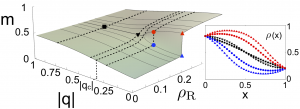 Driven diffusive systems may undergo phase transitions to sustain atypical values of the current. This leads in some cases to symmetry-broken space-time trajectories which enhance the probability of such fluctuations. Here we shed light on both the macroscopic large deviation properties and the microscopic origin of such spontaneous symmetry breaking in the weakly asymmetric exclusion process. By studying the joint fluctuations of the current and a collective order parameter, we uncover the full dynamical phase diagram for arbitrary boundary driving, which is reminiscent of a ℤ2 symmetry-breaking transition. The associated joint large deviation function becomes non-convex below the critical point, where a Maxwell-like violation of the additivity principle is observed. At the microscopic level, the dynamical phase transition is linked to an emerging degeneracy of the ground state of the microscopic generator, from which the optimal trajectories in the symmetry-broken phase follow. In addition, we observe this new symmetry-breaking phenomenon in extensive rare-event simulations of the microscopic dynamics.
Driven diffusive systems may undergo phase transitions to sustain atypical values of the current. This leads in some cases to symmetry-broken space-time trajectories which enhance the probability of such fluctuations. Here we shed light on both the macroscopic large deviation properties and the microscopic origin of such spontaneous symmetry breaking in the weakly asymmetric exclusion process. By studying the joint fluctuations of the current and a collective order parameter, we uncover the full dynamical phase diagram for arbitrary boundary driving, which is reminiscent of a ℤ2 symmetry-breaking transition. The associated joint large deviation function becomes non-convex below the critical point, where a Maxwell-like violation of the additivity principle is observed. At the microscopic level, the dynamical phase transition is linked to an emerging degeneracy of the ground state of the microscopic generator, from which the optimal trajectories in the symmetry-broken phase follow. In addition, we observe this new symmetry-breaking phenomenon in extensive rare-event simulations of the microscopic dynamics. Con
Con
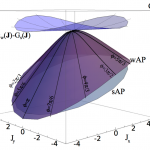 The additivity principle (AP) allows to compute the current distribution in many one-dimensional (1d) nonequilibrium systems. Here we extend this conjecture to general d-dimensional driven diffusive systems, and validate its predictions against both numerical simulations of rare events and microscopic exact calculations of three paradigmatic models of diffusive transport in d=2. Crucially, the existence of a structured current vector field at the fluctuating level, coupled to the local mobility, turns out to be essential to understand current statistics in d>1. We prove that, when compared to the straightforward extension of the AP to high-d, the so-called weak AP always yields a better minimizer of the macroscopic fluctuation theory action for current statistics.
The additivity principle (AP) allows to compute the current distribution in many one-dimensional (1d) nonequilibrium systems. Here we extend this conjecture to general d-dimensional driven diffusive systems, and validate its predictions against both numerical simulations of rare events and microscopic exact calculations of three paradigmatic models of diffusive transport in d=2. Crucially, the existence of a structured current vector field at the fluctuating level, coupled to the local mobility, turns out to be essential to understand current statistics in d>1. We prove that, when compared to the straightforward extension of the AP to high-d, the so-called weak AP always yields a better minimizer of the macroscopic fluctuation theory action for current statistics.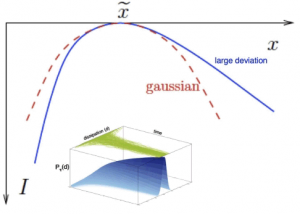 Understanding the physics of non-equilibrium systems remains as one of the major open questions in statistical physics. This problem can be partially handled by investigating macroscopic fluctuations of key magnitudes that characterise the non-equilibrium behaviour of the system of interest; their statistics, associated structures and microscopic origin. During the last years, some new general and powerful methods have appeared to delve into fluctuating behaviour that have drastically changed the way to address this problem in the realm of diffusive systems: macroscopic fluctuation theory (MFT) and a set of advanced computational techniques that make it possible to measure the probability of rare events. Notwithstanding, a satisfactory theory is still lacking in a particular case of intrinsically non-equilibrium systems, namely those in which energy is not conserved but dissipated continuously in the bulk of the system (e.g. granular media). In this work, we put forward the dissipated energy as a relevant quantity in this case and analyse in a pedagogical way its fluctuations, by making use of a suitable generalisation of macroscopic fluctuation theory to driven dissipative media.
Understanding the physics of non-equilibrium systems remains as one of the major open questions in statistical physics. This problem can be partially handled by investigating macroscopic fluctuations of key magnitudes that characterise the non-equilibrium behaviour of the system of interest; their statistics, associated structures and microscopic origin. During the last years, some new general and powerful methods have appeared to delve into fluctuating behaviour that have drastically changed the way to address this problem in the realm of diffusive systems: macroscopic fluctuation theory (MFT) and a set of advanced computational techniques that make it possible to measure the probability of rare events. Notwithstanding, a satisfactory theory is still lacking in a particular case of intrinsically non-equilibrium systems, namely those in which energy is not conserved but dissipated continuously in the bulk of the system (e.g. granular media). In this work, we put forward the dissipated energy as a relevant quantity in this case and analyse in a pedagogical way its fluctuations, by making use of a suitable generalisation of macroscopic fluctuation theory to driven dissipative media.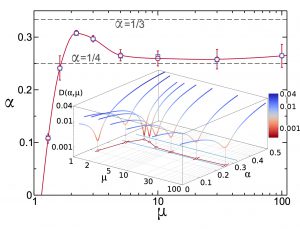 Since the discovery of long-time tails, it has been clear that Fourier’s law in low dimensions is typically anomalous, with a size-dependent heat conductivity, though the nature of the anomaly remains puzzling. The conventional wisdom, supported by recent results from nonlinear fluctuating hydrodynamics, is that the anomaly is universal in 1d momentum-conserving systems and belongs in the Kardar-Parisi-Zhang universality class. Here we challenge this picture by using a novel scaling method to show unambiguously that universality breaks down in the paradigmatic 1d diatomic hard-point fluid. Hydrodynamic profiles for a broad set of gradients, densities and sizes all collapse onto an universal master curve, showing that (anomalous) Fourier’s law holds even deep into the nonlinear regime. This allows to solve the macroscopic transport problem for this model, a solution which compares flawlessly with data and, interestingly, implies the existence of a bound on the heat current in terms of pressure. These results question the use of standard fluctuating hydrodynamics to understand anomalous Fourier’s law in 1d, offering a new perspective on transport and its anomalies in low dimensions.
Since the discovery of long-time tails, it has been clear that Fourier’s law in low dimensions is typically anomalous, with a size-dependent heat conductivity, though the nature of the anomaly remains puzzling. The conventional wisdom, supported by recent results from nonlinear fluctuating hydrodynamics, is that the anomaly is universal in 1d momentum-conserving systems and belongs in the Kardar-Parisi-Zhang universality class. Here we challenge this picture by using a novel scaling method to show unambiguously that universality breaks down in the paradigmatic 1d diatomic hard-point fluid. Hydrodynamic profiles for a broad set of gradients, densities and sizes all collapse onto an universal master curve, showing that (anomalous) Fourier’s law holds even deep into the nonlinear regime. This allows to solve the macroscopic transport problem for this model, a solution which compares flawlessly with data and, interestingly, implies the existence of a bound on the heat current in terms of pressure. These results question the use of standard fluctuating hydrodynamics to understand anomalous Fourier’s law in 1d, offering a new perspective on transport and its anomalies in low dimensions.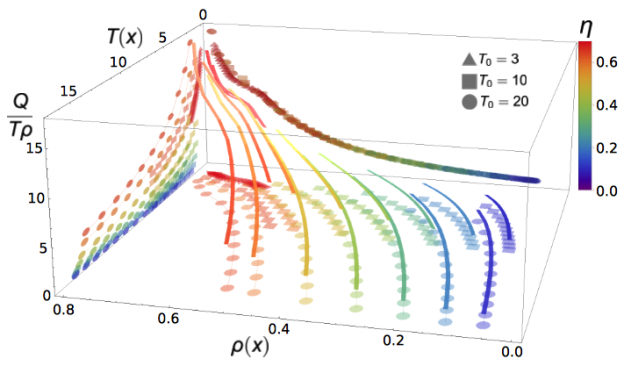
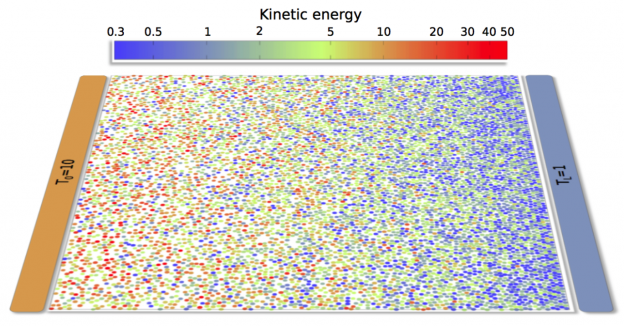
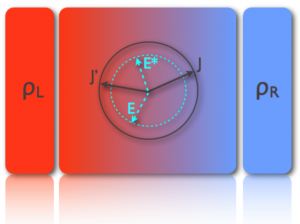 Understanding the physics of nonequilibrium systems remains as one of the major challenges of theoretical physics. This problem can be cracked in part by investigating the macroscopic fluctuations of the currents characterizing nonequilibrium behavior, their statistics and associated structures. This fundamental line of research has been severely hampered by the overwhelming complexity of this problem. However, during the last years two new general methods have appeared to investigate fluctuating behavior that are changing radically our understanding of nonequilibrium physics: a powerful macroscopic fluctuation theory (MFT) and a set of advanced computational techniques to measure rare events. In this work we study the statistics of current fluctuations in nonequilibrium diffusive systems, using macroscopic fluctuation theory as theoretical framework, and advanced Monte Carlo simulations of several stochastic lattice gases as a laboratory to test the emerging picture. Our quest will bring us from (1) the confirmation of an additivity conjecture in one and two dimensions, which considerably simplifies the MFT complex variational problem to compute the thermodynamics of currents, to (2) the discovery of novel isometric fluctuation relations, which opens an unexplored route toward a deeper understanding of nonequilibrium physics by bringing symmetry principles to the realm of fluctuations, and to (3) the observation of coherent structures in fluctuations, which appear via dynamic phase transitions involving a spontaneous symmetry breaking event at the fluctuating level. The clear-cut observation, measurement and characterization of these unexpected phenomena, well described by MFT, strongly support this theoretical scheme as the natural theory to understand the thermodynamics of currents in nonequilibrium diffusive media, opening new avenues of research in nonequilibrium physics.
Understanding the physics of nonequilibrium systems remains as one of the major challenges of theoretical physics. This problem can be cracked in part by investigating the macroscopic fluctuations of the currents characterizing nonequilibrium behavior, their statistics and associated structures. This fundamental line of research has been severely hampered by the overwhelming complexity of this problem. However, during the last years two new general methods have appeared to investigate fluctuating behavior that are changing radically our understanding of nonequilibrium physics: a powerful macroscopic fluctuation theory (MFT) and a set of advanced computational techniques to measure rare events. In this work we study the statistics of current fluctuations in nonequilibrium diffusive systems, using macroscopic fluctuation theory as theoretical framework, and advanced Monte Carlo simulations of several stochastic lattice gases as a laboratory to test the emerging picture. Our quest will bring us from (1) the confirmation of an additivity conjecture in one and two dimensions, which considerably simplifies the MFT complex variational problem to compute the thermodynamics of currents, to (2) the discovery of novel isometric fluctuation relations, which opens an unexplored route toward a deeper understanding of nonequilibrium physics by bringing symmetry principles to the realm of fluctuations, and to (3) the observation of coherent structures in fluctuations, which appear via dynamic phase transitions involving a spontaneous symmetry breaking event at the fluctuating level. The clear-cut observation, measurement and characterization of these unexpected phenomena, well described by MFT, strongly support this theoretical scheme as the natural theory to understand the thermodynamics of currents in nonequilibrium diffusive media, opening new avenues of research in nonequilibrium physics.